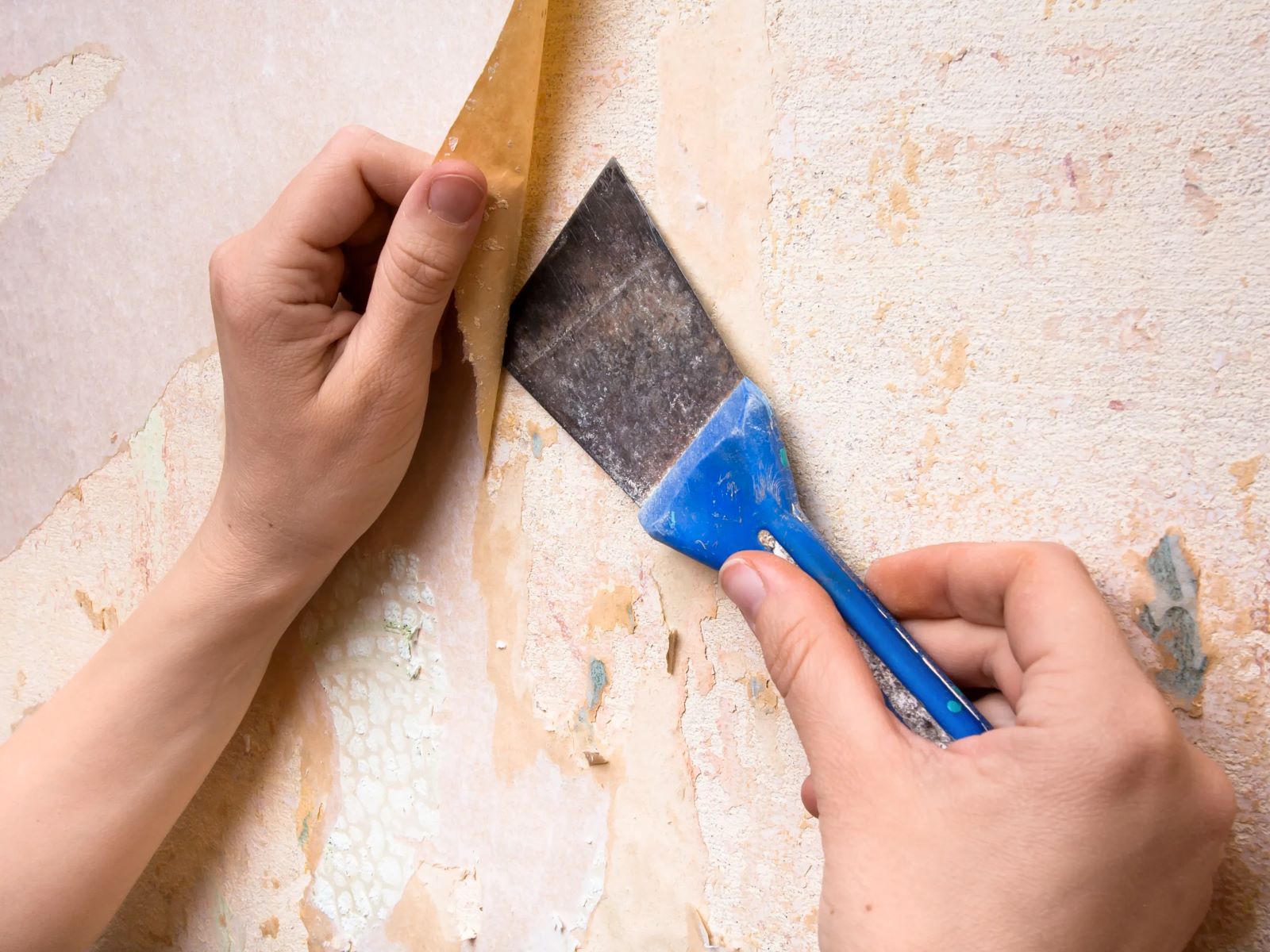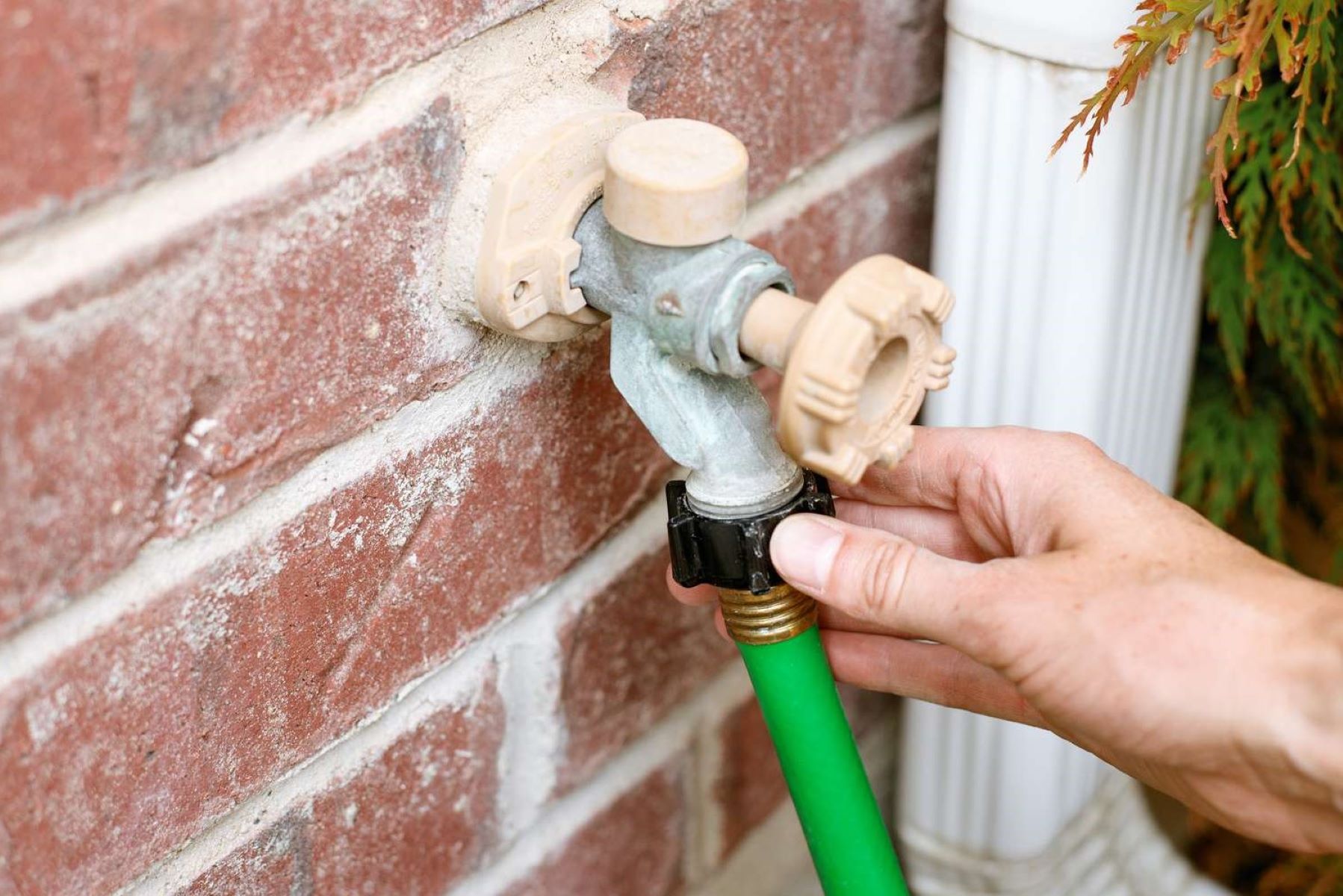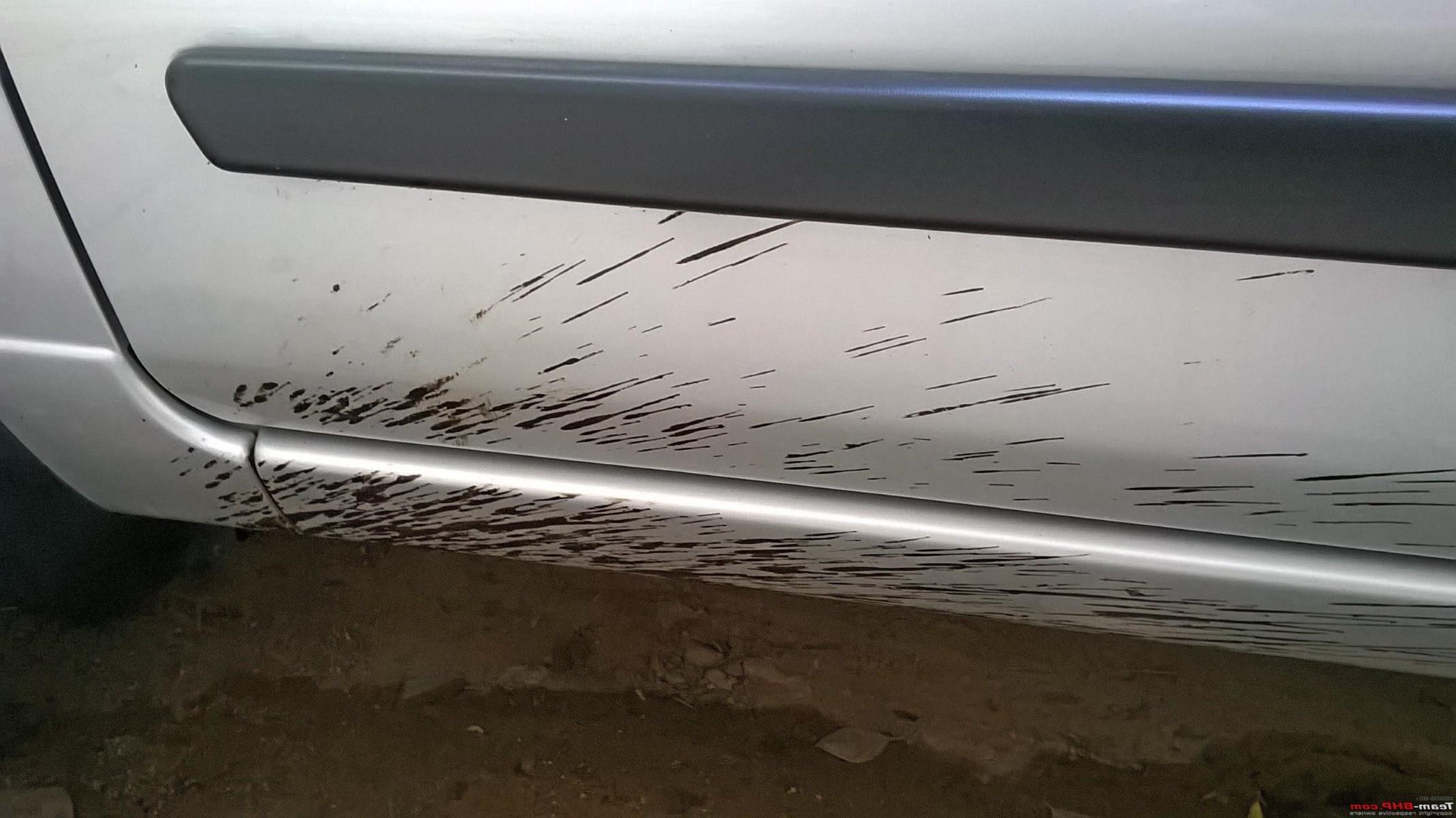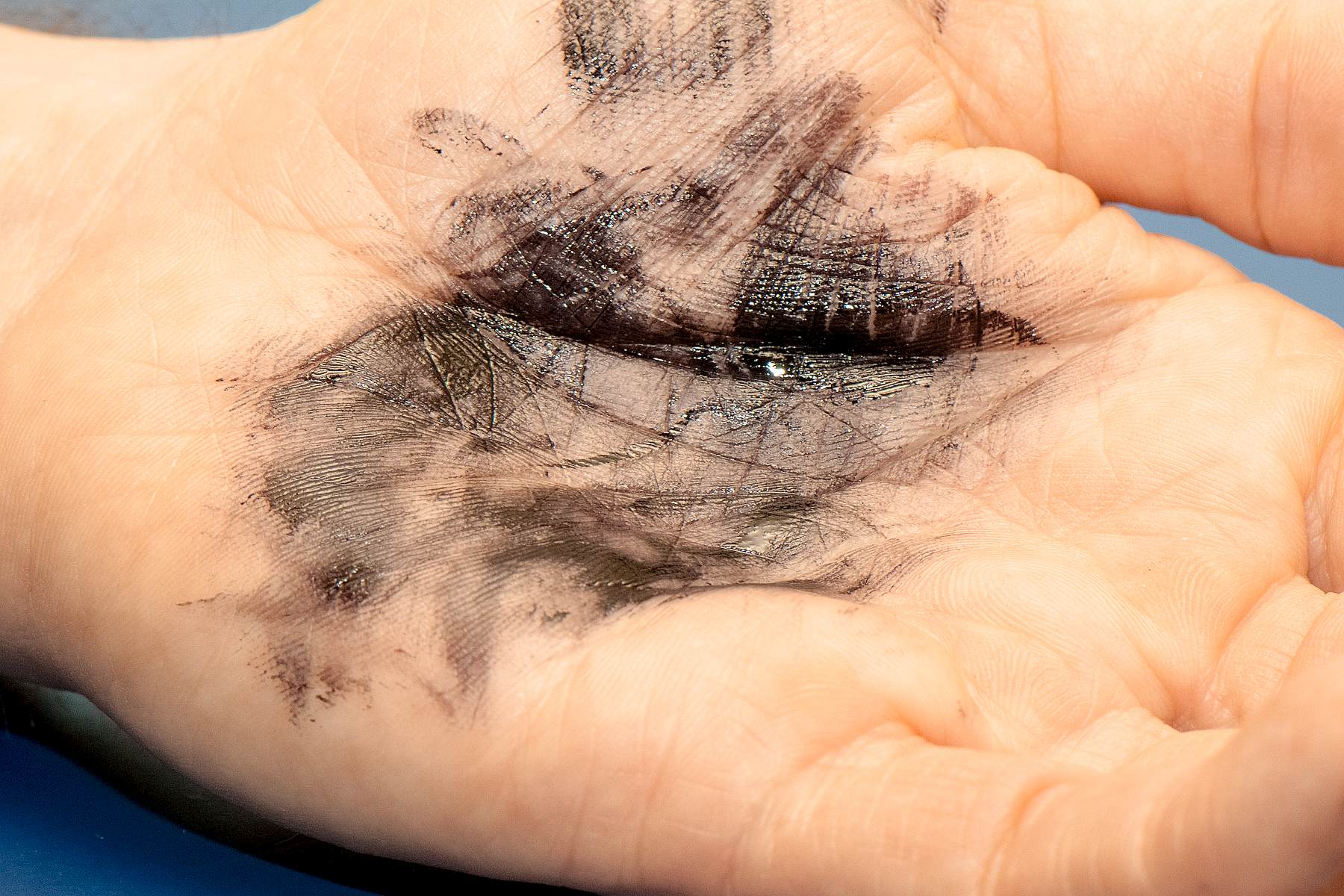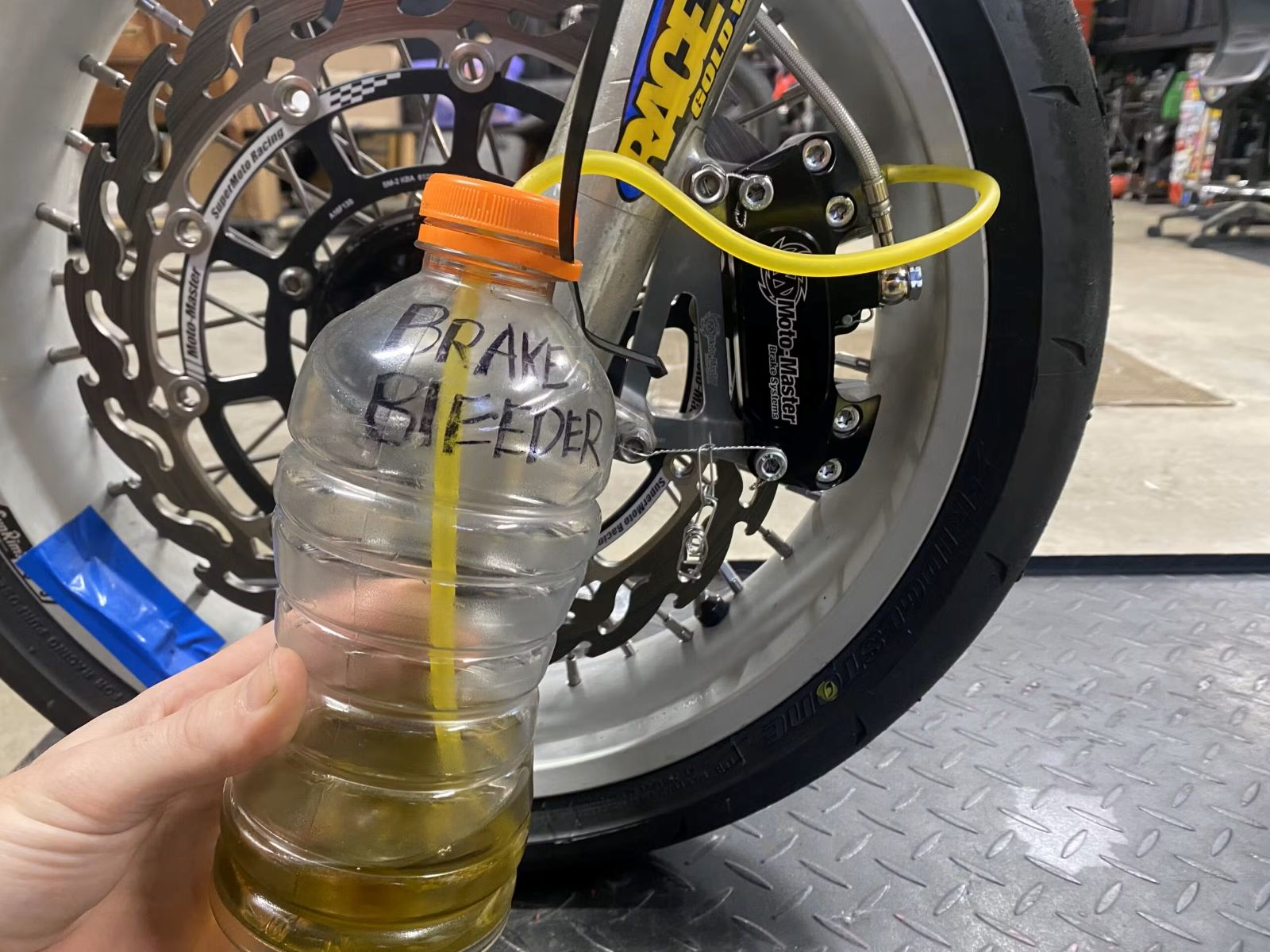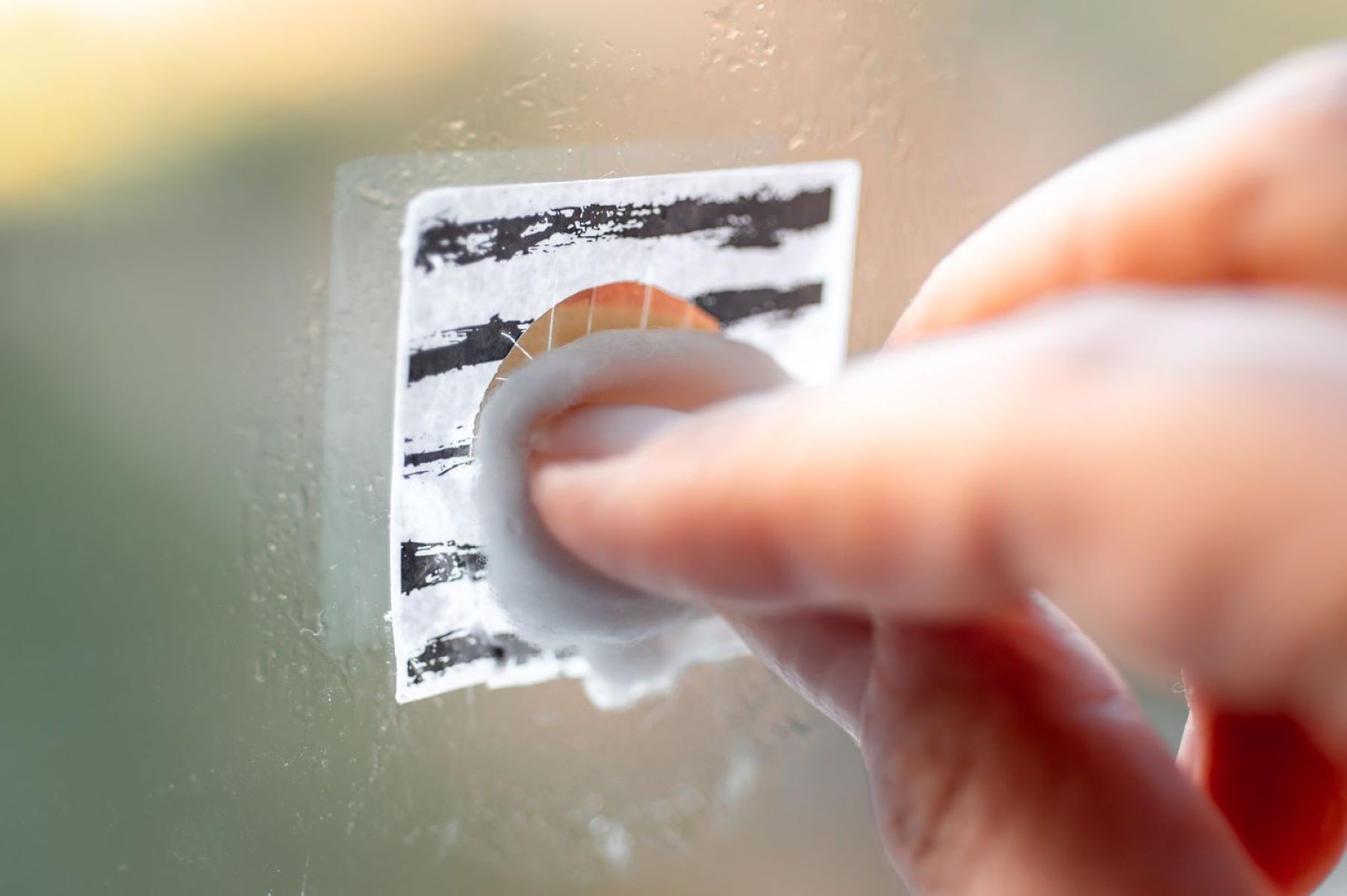Home>Home and Garden>The Ultimate Hack To Easily Remove Paint From Concrete
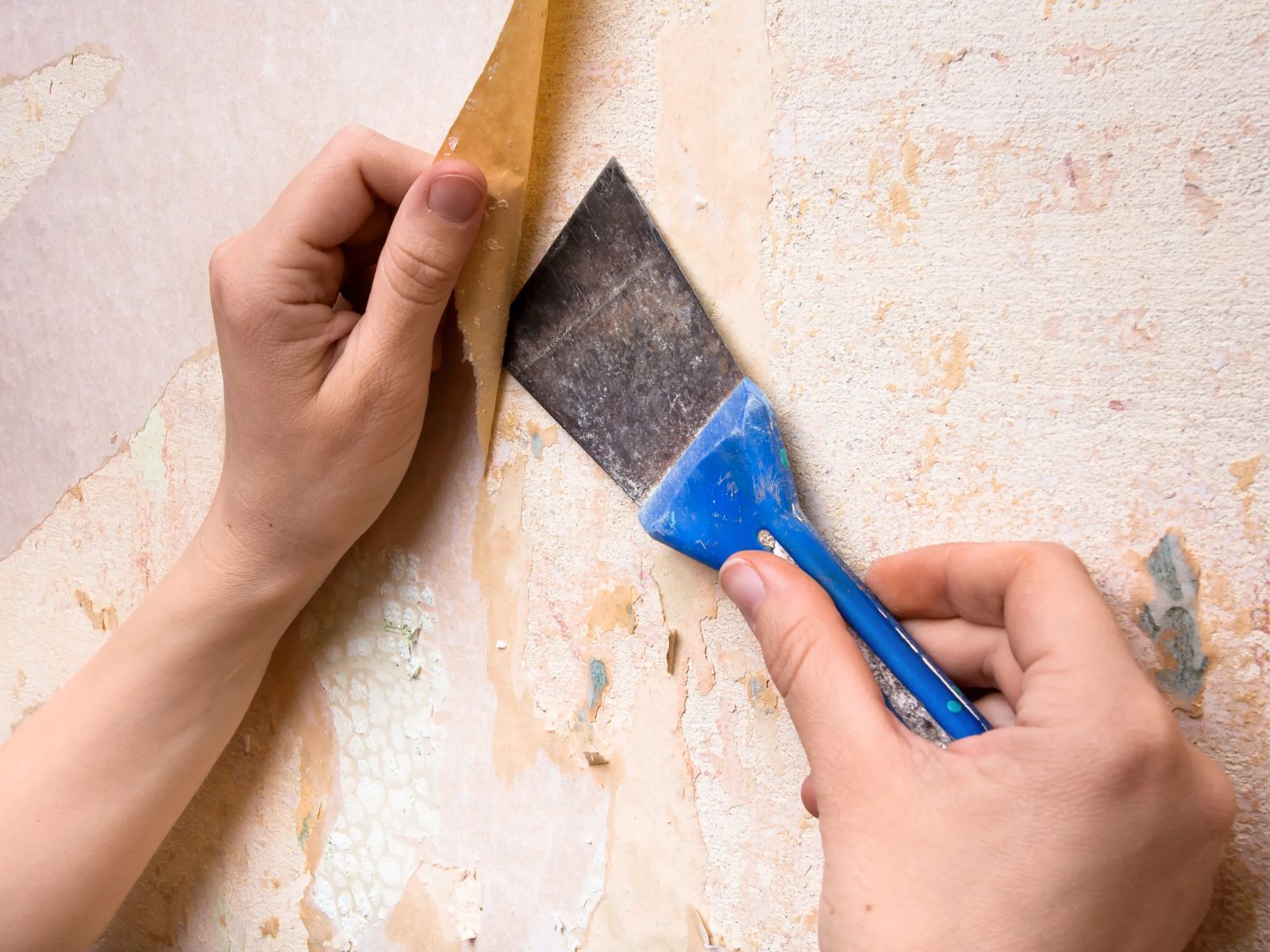

Home and Garden
The Ultimate Hack To Easily Remove Paint From Concrete
Published: January 5, 2024
Discover the ultimate hack for removing paint from concrete effortlessly. Transform your home and garden with this simple solution.
(Many of the links in this article redirect to a specific reviewed product. Your purchase of these products through affiliate links helps to generate commission for Regretless.com, at no extra cost. Learn more)
Table of Contents
Introduction
Removing paint from concrete surfaces can be a daunting task, especially when traditional methods seem to fall short of delivering the desired results. Whether you're looking to revamp your outdoor space or restore the beauty of your concrete floors, the process of paint removal can be a challenging endeavor. However, fear not, as there exists an ultimate hack that can make this seemingly arduous task a breeze.
In the following sections, we will delve into the intricacies of removing paint from concrete, exploring the tools and materials needed, and providing a comprehensive step-by-step guide to achieve optimal results. Additionally, we will share additional tips and techniques that will elevate your paint removal process to a professional level.
Get ready to bid farewell to stubborn paint stains and embrace the renewed allure of your concrete surfaces. Let's embark on this transformative journey to unlock the secrets of effortless paint removal from concrete.
Understanding the Paint Removal Process
Removing paint from concrete involves a thorough understanding of the underlying principles and techniques. It's essential to comprehend the nature of the paint, the characteristics of the concrete surface, and the interaction between the two. This understanding forms the cornerstone of a successful paint removal endeavor.
Paint Types and Adhesion
The first step in the paint removal process is to identify the type of paint that has been applied to the concrete surface. Paints can be broadly categorized as oil-based or water-based, each with distinct properties that influence their adhesion to concrete. Oil-based paints are known for their durability and resistance to moisture, making them more challenging to remove. On the other hand, water-based paints are easier to work with due to their lower viscosity and solubility in water.
Concrete Surface Considerations
The composition and porosity of the concrete surface play a pivotal role in determining the effectiveness of paint removal methods. Smooth, sealed concrete surfaces pose a greater challenge as the paint adheres firmly to the impermeable surface. Conversely, rough or porous concrete surfaces provide more opportunities for the paint to seep into the crevices, potentially complicating the removal process.
Environmental Factors
Environmental conditions, such as temperature and humidity, can significantly impact the paint removal process. High temperatures can accelerate the drying of chemical paint removers, reducing their effectiveness. Conversely, low temperatures may prolong the required dwell time for the removers to penetrate the paint layers. Understanding these environmental factors allows for strategic planning to optimize the paint removal process.
Mechanical vs. Chemical Methods
Mechanical methods, such as sanding or grinding, involve physically abrading the paint from the concrete surface. These methods are effective but can be labor-intensive and may generate dust and debris. On the other hand, chemical paint removers offer a less strenuous approach by breaking down the paint's adhesion to the concrete. Careful consideration of the pros and cons of each method is crucial in determining the most suitable approach for the specific paint and concrete combination.
Compatibility and Safety
It's imperative to ensure that the selected paint removal method is compatible with the concrete surface and does not cause damage or discoloration. Additionally, safety precautions, including the use of protective gear and proper ventilation, must be observed when handling chemical removers to minimize health risks.
By comprehensively understanding these factors, you can approach the paint removal process with confidence and precision, setting the stage for a successful transformation of your concrete surfaces.
Tools and Materials Needed
When embarking on the journey of removing paint from concrete, equipping yourself with the right tools and materials is paramount to achieving a seamless and efficient process. Here's a comprehensive list of essential items that will empower you to tackle the task with confidence:
Protective Gear
- Safety Goggles: Shield your eyes from potential splatters and fumes during the paint removal process.
- Respirator or Mask: Protect your respiratory system from inhaling dust particles or chemical fumes.
- Gloves: Ensure a secure grip and safeguard your hands from chemical exposure.
Paint Removal Tools
- Wire Brush: Ideal for scrubbing and loosening paint from textured or uneven concrete surfaces.
- Paint Scraper: Facilitates the removal of loose or flaking paint layers with precision.
- Sanding Block or Electric Sander: Enables smooth and controlled paint removal, especially for smaller areas.
- Pressure Washer: Utilize high-pressure water to strip away paint from exterior concrete surfaces.
Chemical Paint Removers
- Solvent-Based Remover: Effective for oil-based paint removal, penetrating multiple layers with ease.
- Citrus or Soy-Based Remover: Environmentally friendly option for water-based paint removal, offering gentle yet potent action.
- Methylene Chloride-Free Remover: Prioritizes safety while delivering robust paint dissolving capabilities.
Neutralizing Agents
- Vinegar or Baking Soda Solution: Neutralize residual chemical traces after using solvent-based paint removers.
Surface Preparation and Cleaning
- Concrete Cleaner or Degreaser: Preparing the surface by removing dirt, grease, and contaminants prior to paint removal.
- Bucket and Scrub Brush: Essential for applying cleaning solutions and ensuring thorough surface preparation.
Protective Coverings
- Drop Cloths or Tarps: Shield surrounding areas from paint splatters and debris during the removal process.
- Masking Tape: Secure coverings and protect specific sections from unintended paint removal.
Waste Disposal and Cleanup
- Disposable Gloves and Trash Bags: Safely handle and dispose of paint-laden materials and used protective gear.
- Absorbent Materials: Employ rags or paper towels to absorb excess chemical removers and paint residues.
By assembling these indispensable tools and materials, you are poised to embark on a successful paint removal endeavor. This comprehensive arsenal empowers you to navigate the intricacies of the process with confidence, ensuring a transformative outcome for your concrete surfaces.
Step-by-Step Guide to Removing Paint from Concrete
-
Surface Preparation: Begin by clearing the work area and protecting adjacent surfaces with drop cloths and masking tape. Remove any debris and clean the concrete surface using a concrete cleaner or degreaser. This step ensures that the paint removal process occurs on a clean and uncontaminated surface, optimizing the effectiveness of subsequent steps.
-
Selection of Paint Removal Method: Assess the type of paint on the concrete surface and choose the most suitable removal method. For oil-based paints, consider utilizing a solvent-based paint remover, while water-based paints can be effectively tackled with citrus or soy-based removers. Apply the chosen paint remover following the manufacturer's instructions, ensuring even coverage over the painted areas.
-
Dwell Time and Testing: Allow the paint remover to dwell on the surface for the recommended duration, typically ranging from 15 minutes to several hours, depending on the product and the paint's adhesion. To determine the effectiveness of the remover, perform a small test patch by gently scraping the paint. If the paint readily lifts off, it indicates that the dwell time has been sufficient.
-
Paint Removal Process: Once the dwell time has elapsed, use a paint scraper, wire brush, or pressure washer, depending on the nature of the concrete surface, to remove the softened paint. Work in sections, applying consistent pressure to effectively dislodge the paint. For intricate or stubborn areas, a wire brush can be employed to meticulously remove paint from textured surfaces or crevices.
-
Rinse and Neutralize: After successfully removing the paint, rinse the concrete surface thoroughly with water to eliminate any residual paint remover and paint particles. For solvent-based paint removers, prepare a neutralizing solution of vinegar or baking soda and water to counteract any remaining chemical traces. Apply the solution and rinse the surface once again to ensure complete neutralization.
-
Surface Inspection and Final Clean-Up: Inspect the concrete surface to ensure that all paint residues have been effectively removed. If any stubborn remnants persist, targeted spot treatments can be applied using the appropriate paint removal tools. Once satisfied with the results, allow the surface to dry completely before disposing of any used materials and cleaning the work area.
By meticulously following these step-by-step guidelines, you can navigate the paint removal process with precision and proficiency, unveiling the natural beauty of your concrete surfaces. This systematic approach ensures that each stage of the paint removal journey is executed with care and attention, culminating in a transformative outcome that revitalizes your living spaces.
Additional Tips for Effective Paint Removal
-
Temperature Consideration: When undertaking paint removal from concrete, consider working during moderate temperatures. Extreme heat can cause rapid evaporation of chemical removers, reducing their efficacy, while cold temperatures may prolong the dwell time required for effective paint softening.
-
Multiple Applications: For stubborn or multi-layered paint, be prepared to apply the paint remover multiple times. Layered paints, especially those containing primers, may necessitate repeated applications and thorough scraping to achieve complete removal.
-
Spot Testing: Prior to full-scale application of a paint remover, conduct a spot test on a discreet area of the concrete surface. This allows you to assess the compatibility of the remover with the specific type of paint and concrete, ensuring that it achieves the desired results without adverse effects.
-
Patience and Precision: Approach the paint removal process with patience and precision. Take the time to allow the paint remover to work effectively and exercise care when scraping or brushing off the softened paint. Rushing through the process may compromise the final outcome.
-
Sealant Application: Once the paint has been successfully removed, consider applying a concrete sealant to the newly exposed surface. This not only enhances the aesthetic appeal but also provides protection against future staining and facilitates easier maintenance.
-
Professional Consultation: In cases where the paint adhesion is particularly challenging or if the concrete surface exhibits complexities, seeking professional consultation from a contractor or paint removal specialist can provide valuable insights and guidance.
-
Environmental Awareness: Adhere to environmental regulations and guidelines when disposing of used paint removal materials and residues. Properly contain and dispose of waste in accordance with local regulations to minimize ecological impact.
-
Post-Removal Care: After completing the paint removal process, pay attention to post-removal care. Thoroughly clean and inspect the concrete surface, addressing any residual traces of paint or remover. This meticulous attention to detail ensures a pristine and polished final result.
By incorporating these additional tips into your paint removal endeavor, you elevate the process from a mere task to a refined art, yielding exceptional outcomes and preserving the integrity of your concrete surfaces.
Read more: The Ultimate Hack To Remove My AI Snapchat
Conclusion
In conclusion, the process of removing paint from concrete surfaces is a transformative journey that demands a blend of meticulous technique, strategic planning, and the right tools and materials. By understanding the underlying principles of paint adhesion, the characteristics of the concrete surface, and the environmental factors at play, one can approach the paint removal process with confidence and precision.
The comprehensive guide presented here equips individuals with the knowledge and resources to effectively remove paint from concrete, restoring the natural allure of these surfaces. From the initial surface preparation to the selection of the appropriate paint removal method, each step has been carefully delineated to ensure a seamless and efficient process.
Furthermore, the additional tips provided offer valuable insights and refinements that elevate the paint removal endeavor to a refined art. By considering factors such as temperature, multiple applications, and post-removal care, individuals can navigate the complexities of paint removal with finesse, achieving exceptional results while safeguarding the integrity of the environment.
Ultimately, the successful removal of paint from concrete surfaces transcends mere restoration; it embodies a revitalization of living spaces and outdoor environments. The newfound radiance of the concrete surfaces serves as a testament to the dedication and expertise invested in the paint removal process.
As individuals embark on their paint removal journey, it is essential to approach the task with patience, precision, and a commitment to environmental responsibility. By adhering to best practices and leveraging the insights shared in this guide, individuals can confidently take on the challenge of paint removal, unlocking the natural beauty that lies beneath the layers of paint.
With the ultimate hack for paint removal from concrete at their disposal, individuals are empowered to transform their living spaces, infusing them with renewed vibrancy and visual appeal. Embracing this transformative process fosters a sense of accomplishment and pride, underscoring the remarkable impact that paint removal can have on the aesthetics and functionality of concrete surfaces.
In essence, the journey of paint removal from concrete transcends the physical act; it embodies a harmonious fusion of craftsmanship, artistry, and environmental stewardship, culminating in spaces that exude timeless elegance and charm.
